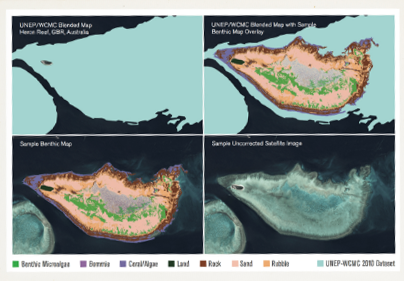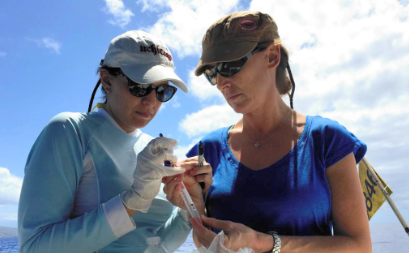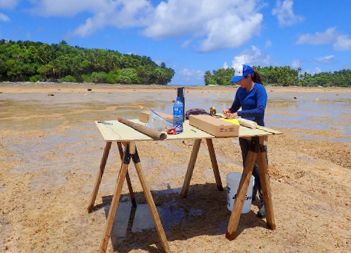Like a medical center for the planet
The Julie Ann Wrigley Global Futures Laboratory is tackling some of the most important and complex problems of our time
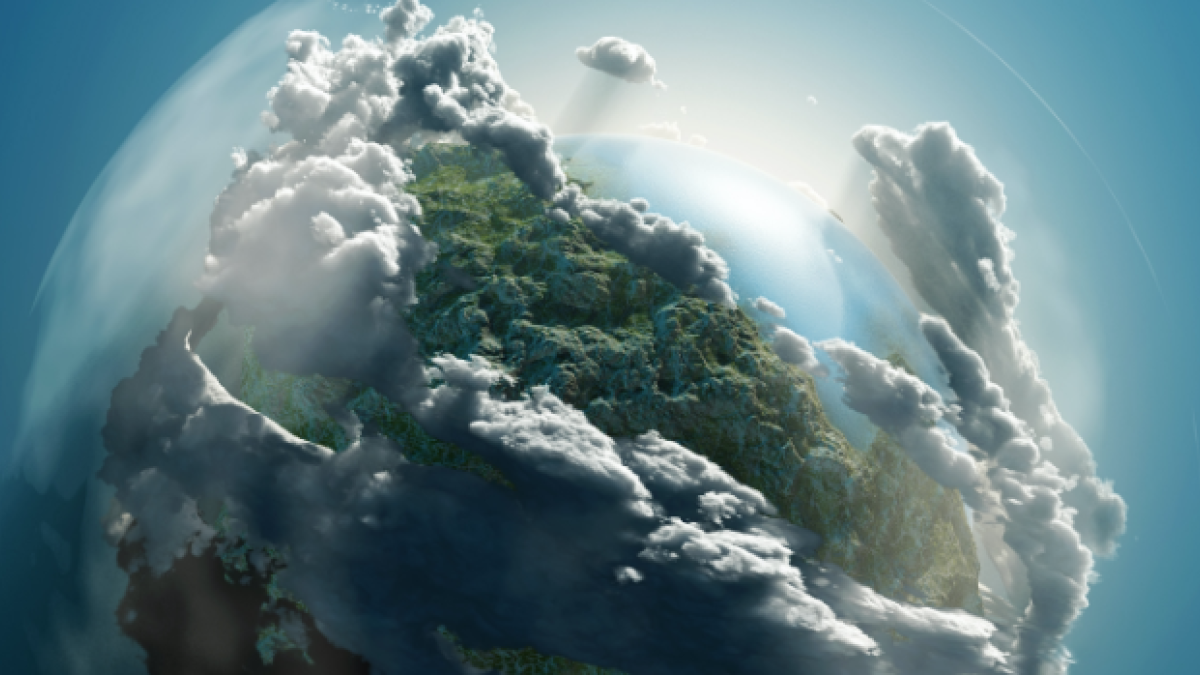
Editor's note: This story originally appeared in the winter 2022 issue of ASU Thrive magazine.
The challenges for the planet’s health and the future of humanity and other life forms command urgency — and Arizona State University is accelerating its wide-reaching collaborative work to help keep the planet not only habitable but healthy.
In 2019, ASU established the Julie Ann Wrigley Global Futures Laboratory as a first-of-its-kind initiative designed to find actionable solutions to the most challenging issues facing global society and our planet. The laboratory is ASU’s response to the growing awareness that conventional approaches to sustainability and planetary wellness are not adequate. Instead, designing a thriving future requires a holistic approach defined by uncompromising transdisciplinary research and open collaboration among universities, businesses, policymakers and the wider public.
In many ways, the laboratory can be conceived as an entity that operates like a medical center for the planet, says ASU President Michael M. Crow. Its mission consists of diagnosing social and environmental maladies, developing new ways of acquiring data from all components of the Earth’s systems, triaging problems to ensure they are properly prioritized, and ultimately prescribing both treatment and ongoing proactive wellness regimens that minimize harm while maximizing health.
“The Global Futures Laboratory is an entity that focuses on how the world might look in the future and imagines pathways that will keep it a place worth living in,” says Peter Schlosser, the laboratory’s vice president and vice provost. “That means a world that is habitable and leaves options for the next generation to shape their lives according to their desires.”
The laboratory consolidates existing research efforts and schools and augments them with new ones. For example, the Global Institute of Sustainability and the Institute for the Future of Innovation in Society have merged to become an encompassing research institution: the Global Institute of Sustainability and Innovation. The laboratory also adds numerous dedicated resources to solving Earth’s greatest challenges, attracts new partner organizations, acts as a single voice with policymakers and influencers like the U.N., and works as a robust center of knowledge and learning about Earth’s health.
Hundreds of the best and brightest minds
Students will be able to work side-by-side with researchers from the Humanities Lab, the Center for Negative Carbon Emissions, the Swette Center for Sustainable Food Systems and several other organizations. Together, they will explore a staggering range of issues such as water scarcity, biosystems, food security, health systems, Indigenous knowledge, future cities and more.
The heart of the Global Futures Laboratory is the new Interdisciplinary Science and Technology Building 7 on the Tempe campus, a $200 million facility hosting more than 500 faculty and 1,300 students. ISTB7 is the largest research building on ASU’s campuses, with both wet and dry labs outfitted for many disciplines, including sustainability, engineering, biology and robotics. Although the building will serve as the lab’s headquarters, the initiative’s impact will extend far beyond its walls to engage partners across ASU’s campuses, out in the field and around the world.
“When people walk into that building, I want them to see that they’re moving into the Anthropocene, the new era shaped by human activities,” Schlosser says. “I want them to recognize the urgency of the moment and see hope in the people at work across collaborative spaces. This new building is a physical center for those who work on how to get us back onto a trajectory of global wellness.”
Transdisciplinary solutions
When Sally Kitch, founding director of the Humanities Lab, heard about Schlosser’s plans, she wasted no time pitching him on folding humanities into the laboratory. “I approached him right away,” Kitch says. “He agreed immediately.”
The emphasis on collaboration among natural scientists, social scientists and humanists is part of what makes the lab unique. And for many of the researchers, it’s also the reason they think the laboratory will succeed in creating solutions to humanity’s and Earth’s biggest problems where others have failed.
“Getting to the root of these problems is not just about finding technological fixes, it’s about changing human beings’ relationship to the planet and to one another,” Kitch says. She co-directs the Seize the Moment initiative — designed to leverage the arts, humanities and sciences to answer pressing existential questions — along with Diana Ayton-Shenker, the CEO of Leonardo, a renowned think tank and publishing group that came to the university for just this kind of collaboration. “All these problems — social justice, environmental and health problems — are all very interconnected. You need the humanities in there so we can act quickly and with wisdom.”
This transdisciplinary approach is one of the keys to taking research and implementing it in the real world.
“In my view, we are not limited by scientific knowledge at this point,” Schlosser says. “We are limited by translating that scientific insight into action.”
“When you couple the science-based efforts at BIOS to our efforts led by Greg Asner in the Pacific, a clearer picture of the overall ocean dynamics and health will begin to come into full view.”
— Michael M. Crow, President of ASU
Data and knowledge for improving positive outcomes
A major part of the concept of the Global Futures Laboratory is hundreds of dedicated scholars and scientists across multiple disciplines gathering knowledge and data about how the planet functions across various systems. This is essential for creating wellness solutions and interventions that create positive outcomes.
In September, an international team of researchers including Greg Asner, the director of the Center for Global Discovery and Conservation Science, completed work on the first-ever coral reef atlas. The mapping tool, initiated via a partnership among ASU, Vulcan Inc., National Geographic, Planet and The University of Queensland, allows researchers and policymakers to leverage satellite data to track coral reef health around the world. Prior to the Allen Coral Atlas, this data had never been available at this scale.
The Allen Coral Atlas shows detailed coral reef health in a way never before.
In the Atlantic Ocean, the laboratory is partnering with the Bermuda Institute of Ocean Sciences, a premier research institute studying ocean processes. Building on yearslong work, the partnership will share expertise in ocean sciences to study the highly interlinked, complex problems related to the future of the planet and will put students on the cutting edge of ocean science. It also will allow BIOS to hire some of these passionate students post-graduation to continue to develop sensors and robotic systems to monitor the ocean in the coming decades, says BIOS President and CEO Bill Curry.
“When you couple the science-based efforts at BIOS to our efforts led by Greg Asner in the Pacific, a clearer picture of the overall ocean dynamics and health will begin to come into full view,” Crow says. “We expect that this new partnership will be a huge benefit to all Earth scientists seeking a clearer and more concise view of the ‘state of the planet.’”
With these types of knowledge and data, researchers also can help prioritize actions. One of the many examples of this is a report by the Swette Center for Sustainable Food Systems led by Executive Director Kathleen Merrigan. It details 46 recommendations to guide the Biden administration’s approach to organic agriculture. The recent Swette report will help policymakers at all levels triage issues to make the biggest positive impacts on carbon emissions, soil and water health, and people’s health in the shortest amount of time.
“In my view, we are not limited by scientific knowledge at this point. We are limited by translating that scientific insight into action.”
— Peter Schlosser, vice president and vice provost, the Global Futures Laboratory
Addressing global issues
Dave White, director of the Global Institute of Sustainability and Innovation, says the laboratory’s findings can help locally and globally.
“The Global Futures Laboratory allows us to scale up to other areas around the world,” White says.
In 2021, for example, researchers working with the ASU Rob and Melani Walton Sustainability Solutions Service, the Center for Biodiversity Outcomes and Conservation International joined forces with the U.S. Agency for International Development to lead a new program in Peru, which currently is experiencing biodiversity loss from unsustainable land development. It is meant to create solutions to foster entrepreneurship that help to protect biodiversity, not only in the Amazon, but beyond.
Leah Gerber (right) near Maui conducts research on humpback whales with graduate students and collaborators.
The program builds on years of transdisciplinary work by Leah Gerber, the founding director of the CBO. She and colleagues are developing new ways of funding conservation by drawing on tools from economics and finance, such as defining biodiversity’s “return on investment” and creating conservation markets in which people can buy shares of species.
“Given that there is a scarcity of resources going toward biodiversity conservation, the big question is: How can we maximize what we’re getting?” explains Gerber. “Everything I do is done with the idea that we can amplify it, and it could be more generally applied.”
Honoring Native knowledge and youths’ wisdom
Researchers affiliated with Global Futures also are having an impact around the world through the inclusion of Indigenous knowledge about living in balance with Mother Earth. This includes the hiring of Indigenous scientists, collaborative projects and the direct listening to and working with Indigenous groups and other stakeholders.
Recently, Native Hawaiian Assistant Professor Haunani Kane, who joined the Global Futures Laboratory’s Center for Global Discovery and Conservation Science last summer, led a two-week climate research voyage in Hawaii that drew on Indigenous traditions to study how the islands are responding to rising sea levels.
Around the same time, the laboratory received a five-year, $6.4 million grant from the National Oceanic and Atmospheric Administration that will support the Global Futures-led Pacific Regional Integrated Sciences and Assessments (Pacific RISA) program to address climate challenges on the Pacific islands. As the next phase in yearslong work, this new center, in partnership with local Indigenous peoples and colleagues at the University of Hawaii and the East-West Center, will help create solutions to pressing climate issues and ways to mitigate climate-change-caused damage to these communities.
Another key focus is creating opportunities for students to make an impact. As Schlosser points out, many young people feel as though earlier generations disenfranchised them by not addressing climate change. The laboratory’s approach supports students in pursuing research that has real-world outcomes now and far into the future — their own and their future grandchildren’s and beyond.
“These students and young activists are capable of anything given the right kinds of opportunities,” Kitch says. “If you put a team of students together and give them the freedom and support to design something that is a step toward changing policy, that’s a whole different learning experience.”
Haunani Kane conducting research on rising sea levels. Her focus areas include Samoa, the Marshall Islands and Hawaii.
Plotting a course to a thriving future
The Global Futures Laboratory embraces students from across the university and partners and stakeholders from around the world. Andrew Maynard, director of the Risk Innovation Lab and an associate dean in the College of Global Futures, says the full curriculum will focus on cultivating skills students need to work on challenges that require a holistic understanding of complex systems.
“We have the capacity to equip students not only with the skills, but the mindset to see pathways forward in a way never done before in educational programs,” Maynard says. “We’re at the end of the line in terms of problems that we can solve with individual disciplines. The way we’re going to solve problems is by merging and transcending disciplines. And that’s exactly what we will be training students to do.”
There are still many unknowns, but this comes with the territory of launching an entirely new model for how universities engage with the era’s most pressing problems. What is certain, however, is that this ambitious medical center for a habitable planet would never have been possible without the university’s commitment to fostering academic work with real-world impacts and its decadeslong support of sustainability and transdisciplinary research. Together, these laid the foundation for the success of the Global Futures Laboratory and, perhaps, the planet as a whole.
“The increasing number of global climate and societal events we are witnessing proves that urgency is one of the major messages that we have to convey to ourselves, to our partners and to the world,” Schlosser says. “But the next 10 years also present an opportunity unlike we have ever seen before. We are leading the way by pursuing what we think is necessary, but the world needs to decide to act. The world needs more global futures laboratories. We cannot do it alone. Together, we create hope.”
Written by Daniel Oberhaus
More Science and technology
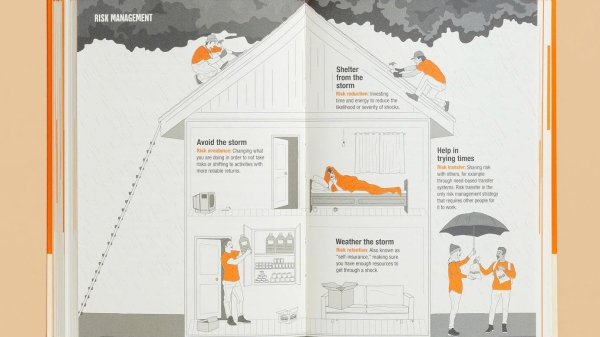
ASU author puts the fun in preparing for the apocalypse
The idea of an apocalypse was once only the stuff of science fiction — like in “Dawn of the Dead” or “I Am Legend.” However these days, amid escalating global conflicts and the prospect of a nuclear…

Meet student researchers solving real-world challenges
Developing sustainable solar energy solutions, deploying fungi to support soils affected by wildfire, making space education more accessible and using machine learning for semiconductor material…

Miss Arizona, computer science major wants to inspire children to combine code and creativity
Editor’s note: This story is part of a series of profiles of notable spring 2024 graduates. “It’s bittersweet.” That’s how Tiffany Ticlo describes reaching this milestone. In May, she will graduate…
